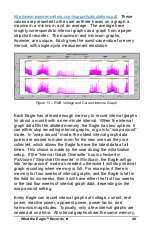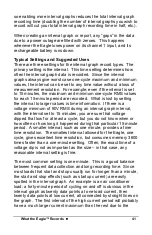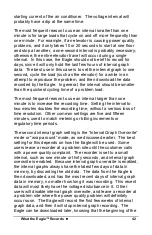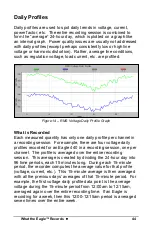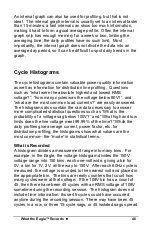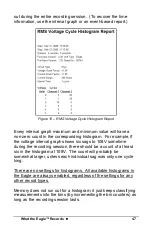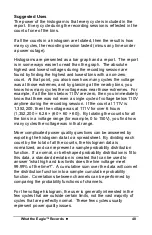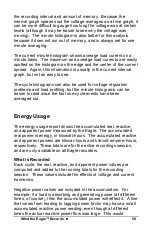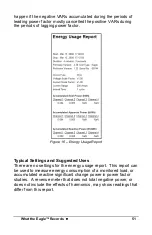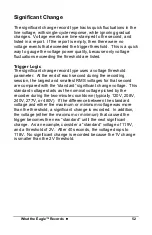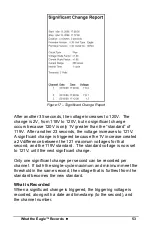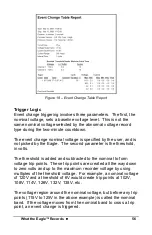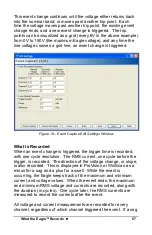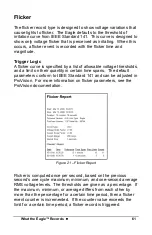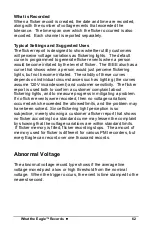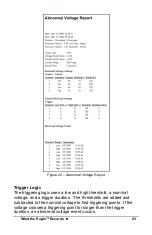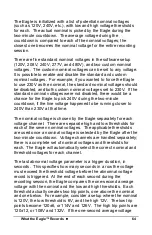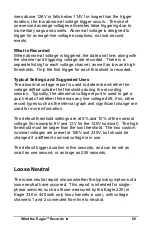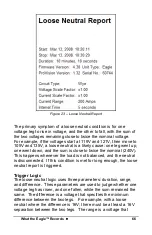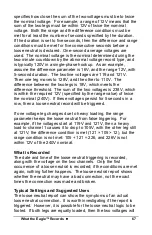
What the Eagle™ Records
••••
52
Significant Change
The significant change record type tracks quick fluctuations in the
line voltage, with single-cycle response, while ignoring gradual
changes. Voltage events are time-stamped to the second, and
listed in a report. If the report is empty, then there were no
voltage events that exceeded the trigger threshold. This is a quick
way to gauge the voltage power quality, because only voltage
fluctuations exceeding the threshold are listed.
Trigger Logic
The significant change record type uses a voltage threshold
parameter. At the end of each second during the recording
session, the largest and smallest RMS voltages for that second
are compared with the “standard” significant change voltage. This
standard voltage starts as the nominal voltage picked by the
recorder during the two-minute countdown (typically 120V, 208V,
240V, 277V, or 480V). If the difference between the standard
voltage and either the maximum or minimum voltage was more
than the threshold, a significant change is recorded. In addition,
the voltage (either the maximum or minimum) that caused the
trigger becomes the new “standard” until the next significant
change. As an example, consider a “standard” voltage of 119V,
and a threshold of 2V. After 40 seconds, the voltage drops to
118V. No significant change is recorded because the 1V change
is smaller than the 2V threshold.



